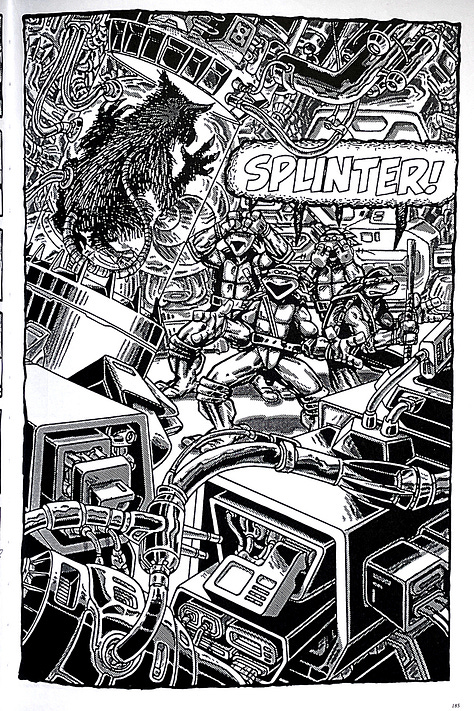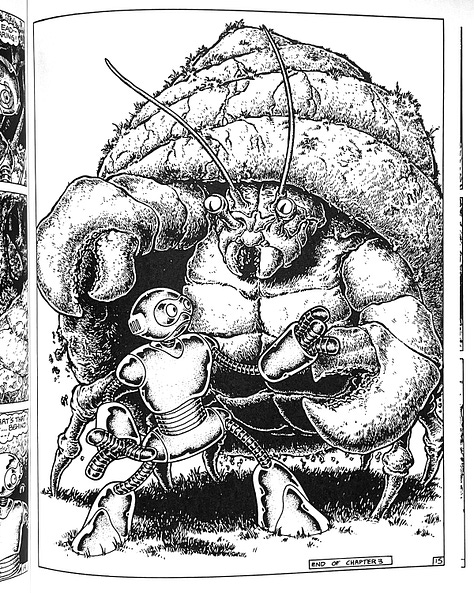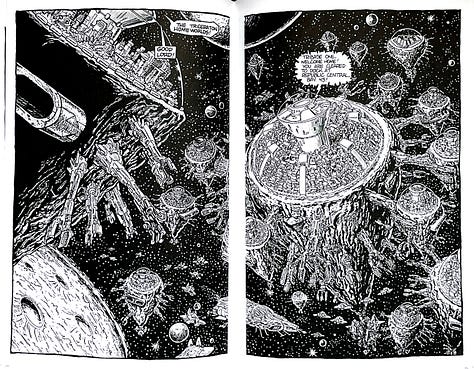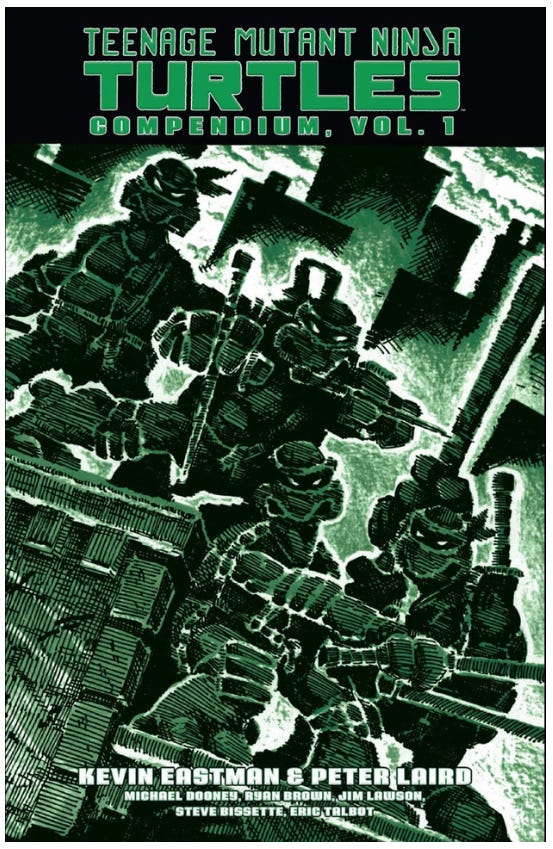Let’s go ahead and get it all out there. I was born in 1979, which means that I was only 5 years old when Kevin Eastman and Peter Laird published their homemade black and white underground comic Teenage Mutant Ninja Turtles; taking liberties with Marvel’s Daredevil comic as well as poking fun at the genre they both were in love with. I was 8 when the original animated series first aired on television. Although I can’t guarantee I was a fan at 8 years old, I can definitely solidify that between 8 and 18 years old-that decades long run of TMNT cartoons eventually got its hooks in me. I had the action figures. I had the pizza-launching turtle van. I saw the 90’s movies. I remember Vanilla Ice’s Ninja Rap actually being played on the radio. I bought the soundtrack on cassette. What I’m trying to say is…I’m a fan.
A lot of what I internalized from those tween years of TMNT fandom is what I’m sure a lot of what pop culture tells you: the turtles each have a single personality, they love pizza, they often say cheesy 80’s phrases i.e. tubular, radical, gnarly, and-well, you know the one, and their first ally is a red-haired news reporter who never changes outfits. Imagine my surprise upon reading the comics at how much of that isn’t in the original source material. What exists instead is evidence why these comics, and this craze, took off in the way that it did.
The first thing that grabbed me when reading the original comics is just how good the art is. I mean these guys could draw! As I read through the compendium, from issue to issue, I watched as they got better at their craft in real time. The compendium collects the TMNT comics spanning from 1984-1988. Four years of comic making passing before my eyes as I read through this first collection. Their art is a testament to the adage you only get better at something you do every day . That, and you see the turtles physiology began to morph slowly into their more modern iterations. Back then, they still had tales. Another reminder that these guys’ artwork was on another level was the successful use of the splash page. It makes me want to make a comic just so I can draw a splash page that might be able to measure up.



The next thing I realized within the conclusion of that debut issue is I’m not reading some Saturday Morning Cartoon version of the turtles. Their first mission is to find and kill Splinter’s longtime rival Shredder. Which, they do (they think-he returns later of course). But for all intensive purposes, these trained ninjas enact vengeance on behalf of their master and mentor. By the end of the second issue, I realized that April isn’t a reporter but a computer programmer and lab assistant to Baxter Stockman. It wasn’t until I was 8 or 9 issues in did I realize I had yet to read the word “cowabunga” or see a slice of pizza. They get wounded during battles. As young crime-fighters, they make rookie mistakes. During one particular storyline, Donatello has a bit of mental breakdown as the stress of their situation starts to get to him. Don-apparently-does more than just machines. Time and time again, they re-defined the modern TMNT lore.
It took me 8 or 9 issues to catch this because I was so engrossed in the storytelling. Eastman and Laird pack each comic to the brim with action, heart, suspense and tension. Each issue strikes a perfect balance of dialogue verses action, setup and execution. And those splash pages! I was over half way through the massive volume before I asked myself, wait-where’s the pizza?
Which is why I’d highly recommend this first compendium. My favorite comics in recent years have been when creators have taken well known characters and told stories that exist outside the “continuity” of current comic storylines. Cliff Chiang’s Catwoman Lonely City is a future Gotham in which Batman is dead. A favorite TMNT tale is The Last Ronin wherein the last living ninja turtle-all grown up and jaded-enacts revenge on his fallen family. The cartoon and film adaptations of these comics have been adopted as the popular version of the turtles. This makes reading the original comics such a treat, because they’re so unlike their pop culture counterparts. They’re dark and gritty. They don’t have one-note personalities. And no one is crushing on April. In summary, reading this first compendium is like breathing a breath of fresh air into a fandom I’m already a card carrying member of, and it looks like I’ll be renewing my TMNT club membership on an indefinite basis.
Published by IDW October 2022
Story and Art by Kevin Eastman and Peter Laird along with contributors: Michael Dooney, Ryan Brown, Jim Lawson, Steve Bissette, and Eric Talbot with lettering by Steve Lavigne.





